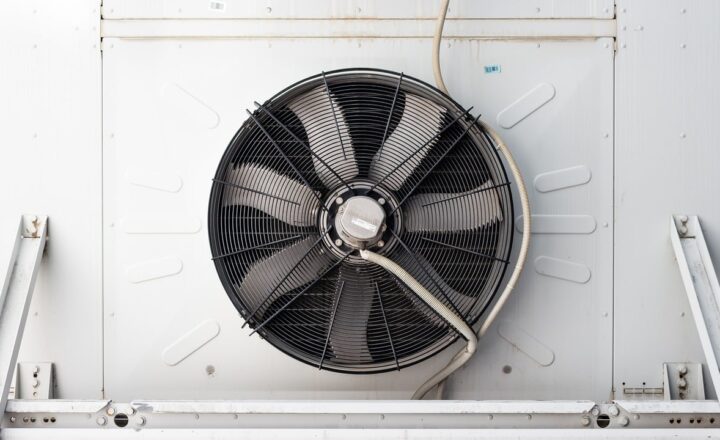
Car manufacturing is a complex process, influenced by various factors that extend beyond design, engineering, and technology. One of the most critical elements is the environmental conditions where vehicles are produced. Manufacturing plants that operate in extreme climates—whether it be scorching deserts, frigid tundras, or areas prone to flooding—face unique challenges that can affect not only the production timeline but also the quality and durability of the vehicles themselves.
1. Understanding the Impact of Climate
Extreme climates can significantly affect the manufacturing process. Here’s how different environments present specific challenges:
- High Temperatures: In regions with soaring temperatures, such as deserts, equipment can overheat, leading to malfunctions and delays. Workers may also face risks of heat-related illnesses, which can reduce productivity.
- Cold Temperatures: Manufacturing in extremely cold environments can slow down processes due to the need for heating in facilities. The use of certain materials may also become problematic, as some plastics or metals can become brittle and less malleable at low temperatures.
- Humidity and Rainfall: In regions that experience high humidity or frequent rain, manufacturers must contend with corrosion and rust. This can lead to costly rework and increased quality control measures to ensure vehicles can withstand the elements once they leave the production line.
- Natural Disasters: Areas prone to natural disasters, such as floods, hurricanes, or earthquakes, pose an additional layer of risk, forcing manufacturers to invest heavily in disaster preparedness and recovery plans.
These factors not only complicate the manufacturing processes but also require meticulous planning and innovation to mitigate the effects of the surrounding environment.
2. Material Challenges in Extreme Climates
Selecting the right materials for vehicle production is crucial, particularly in extreme climates. The varying environmental factors can have drastic effects on material performance that must be taken into account:
- Heat-Resistant Materials: In hot regions, manufacturers may need to rely on heat-resistant composites and metals that can withstand high temperatures without deforming or losing structural integrity.
- Cold-Resilient Materials: Conversely, in cold climates, materials that remain flexible and resilient must be prioritized to prevent cracks and breakage during manufacture and operation.
- Corrosion-Resistant Finishes: For humid and rainy environments, protective coatings on metal parts are essential to prevent rust and corrosion, ensuring the longevity of the vehicles produced.
- Sustainable Materials for Adaptability: As climate change affects weather patterns across the globe, the automotive industry is also exploring sustainable materials that can adapt to various environments without compromising performance.
Incorporating these specialized materials can add cost and complexity to the manufacturing process but is vital in ensuring that the resulting vehicles are reliable and durable.
3. Technological Innovations & Adaptations
The challenges presented by extreme climates have spurred the automotive industry to innovate and adapt. Some key technological advancements include:
- Climate-Controlled Manufacturing Facilities: Investment in advanced climate-control technologies helps maintain optimal production environments despite external conditions, aiding both worker safety and product quality.
- Advanced Quality Control Systems: Utilizing AI and machine learning can assist in rigorous quality control, allowing manufacturers to detect defects caused by environmental stresses before vehicles leave the production line.
- Remote Monitoring Solutions: Implementing Internet of Things (IoT) technologies can enhance the monitoring of machinery and production conditions in real-time, facilitating rapid response to any climate-induced issues affecting productivity or safety.
These innovations play a crucial role in overcoming the challenges posed by extreme climates, resulting in enhanced manufacturing efficiency and product reliability.
4. Economic Implications of Climate Challenges
Manufacturers operating in extreme climates also face unique economic challenges:
- Increased Operational Costs: Facilities in harsh environments often incur higher costs for heating, cooling, special equipment, and protective measures against natural elements.
- Workforce Considerations: Ensuring worker safety and retention is paramount. Manufacturers may need to offer incentives or bonuses in extreme climates to attract and maintain a skilled labor force.
- Supply Chain Disruptions: Extreme weather can impact supply chains, causing delays and shortages of essential components. Manufacturers must establish contingency plans to adapt to these interruptions efficiently.
Navigating these economic challenges requires strategic planning and investment, ultimately impacting the overall profitability of automobile manufacturing in extreme climates.
5. The Future of Car Manufacturing in Extreme Climates
As the automotive industry moves toward innovation and sustainability, the future of car manufacturing in extreme climates will likely involve:
- Sustainable Practices: Manufacturers are increasingly focused on minimizing their environmental footprint, adopting renewable energy sources, and implementing recycling processes in production to counteract some of the stressful impacts of their climates.
- Adaptability and Resilience: The ability to adapt to changing climatic conditions will be crucial. Manufacturers must remain flexible in their processes and strategies to ensure continued success in diverse environments.
- Consumer-Focused Innovations: Cars of the future will become more climate-resilient, taking into account the diverse environments they will encounter, thereby increasing consumer confidence in vehicles manufactured in extreme conditions.
The journey ahead may be daunting, yet manufacturers have the opportunity to leverage challenges in extreme climates as catalysts for innovation and differentiation within the competitive automotive industry.
Conclusion
Car manufacturing in extreme climates is fraught with challenges, yet it is also an arena ripe for innovation and adaptability. By understanding the specific impacts of different environmental conditions, companies can implement processes and technologies that enable them to produce high-quality, durable vehicles. The integration of sustainable practices and advanced monitoring technologies will not only help navigate these challenges but also create a more resilient future for the automotive industry.







